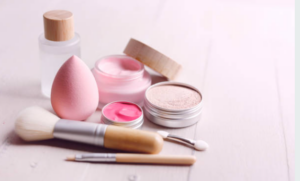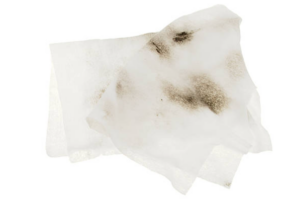Health Concerns and Alternatives

The world of makeup is a realm of artistry, expression, and self-enhancement. However, beneath the dazzling array of colors and products lies a complex landscape of ingredients, some of which pose potential risks to our health and well-being. Coal tar dyes and petroleum byproducts are two such categories that have raised concerns in recent years. In this comprehensive guide, we’ll delve into the risks associated with these ingredients in makeup, explore their potential health implications, and discover safer alternatives that allow us to embrace beauty without compromising our health.
The Hidden Dangers
Coal tar dyes, often listed on ingredient labels as “CI” followed by a number, are synthetic colorants derived from coal tar, a byproduct of the coal processing industry. While they have been used for decades to provide makeup products with vivid and long-lasting colors, concerns have emerged about their potential impact on our health. Let’s take a closer look at the hidden dangers associated with coal tar dyes.
Coal tar dyes have been linked to allergic reactions and skin irritation in some individuals. These reactions can manifest as redness, itching, burning, and swelling when makeup products containing coal tar dyes come into contact with the skin. Sensitivity can vary from person to person, and repeated exposure may exacerbate these reactions.
Perhaps the most concerning aspect of coal tar dyes is their potential carcinogenicity. Some coal tar dyes, particularly those containing benzene-related compounds, have raised alarms within the scientific community. Benzene is a known human carcinogen, and the presence of this compound in certain coal tar dyes is a cause for worry.
Furthermore, the manufacturing process of coal tar dyes can involve the use of various chemicals and procedures, which may lead to contamination. This contamination could result in the presence of impurities, some of which might be harmful when applied to the skin, especially over an extended period.
The long-term effects of prolonged exposure to coal tar dyes remain a subject of concern and ongoing research. While some studies have linked certain coal tar dyes to cancer risk, more research is needed to establish a definitive connection. However, the potential for harm, especially considering the presence of benzene-related compounds, is significant enough to raise questions about their safety in cosmetics.
In addition to the health risks, the production and disposal of coal tar dyes can have detrimental effects on the environment. The extraction of coal tar and the manufacturing of these dyes contribute to air and water pollution, impacting ecosystems and potentially harming aquatic life.
As awareness grows about the potential risks of coal tar dyes, many makeup brands and consumers are seeking safer alternatives. Here are some alternatives that provide vibrant colors without the associated health concerns:
Plant-derived pigments offer a natural and safer alternative to coal tar dyes. These pigments are sourced from fruits, vegetables, and minerals, providing a range of beautiful hues without the risk of skin irritation or long-term health effects. Some examples of plant-derived pigments include beetroot powder, spirulina, and turmeric.
Mineral makeup has gained popularity for its use of naturally occurring minerals to achieve color. Iron oxides, mica, and titanium dioxide are commonly used to create a wide spectrum of shades. These minerals are less likely to cause skin reactions and have a lower risk of contamination compared to synthetic dyes.
Some makeup brands are turning to water-soluble colors derived from plant extracts, fruits, and vegetables. These colors provide vibrant hues without the need for synthetic dyes. Water-soluble colors are often less likely to cause skin irritation and are generally considered safe for cosmetic use.

Petroleum Byproducts: The Slippery Slope
Petroleum byproducts, including mineral oil and paraffin, have long been used in skincare and makeup products for their texture-enhancing and moisturizing properties. However, beneath their seemingly innocuous benefits lies a complex web of concerns that should prompt us to rethink their presence in our beauty routines.
1. Clogged Pores and Acne
One of the primary concerns associated with petroleum byproducts is their potential to clog pores. These ingredients create a barrier on the skin’s surface, which can trap debris, dead skin cells, and excess oil. As a result, pores become blocked, leading to the formation of blackheads, whiteheads, and acne breakouts. Individuals with oily or acne-prone skin are particularly vulnerable to the pore-clogging effects of petroleum-based products.
2. Skin Irritation and Sensitivity
While some individuals tolerate petroleum byproducts well, others may experience skin irritation, redness, itching, or burning when using products containing these ingredients. For those with sensitive skin, the occlusive nature of petroleum-based products can disrupt the skin’s natural barrier, leading to heightened sensitivity and discomfort.
3. Dependency on Moisture
One of the misconceptions about petroleum byproducts is that they provide long-lasting hydration to the skin. In reality, these ingredients create a superficial layer on the skin’s surface, which can hinder the skin’s ability to breathe and regulate its moisture levels naturally. As a result, over time, the skin may become reliant on external moisture, leading to a cycle of dependency.
4. Lack of Nutrient Benefits
Unlike natural plant-based oils, which are rich in vitamins, antioxidants, and essential fatty acids, petroleum byproducts lack these beneficial components. While plant-based oils nourish the skin and offer a host of benefits, petroleum byproducts merely create a barrier without providing the essential nutrients needed for optimal skin health.
5. Environmental Concerns
The production, processing, and disposal of petroleum-based ingredients have environmental implications. The extraction of crude oil, the raw material used to create petroleum byproducts, contributes to air and water pollution. Additionally, the accumulation of plastic waste from cosmetic packaging, often derived from petroleum-based materials, poses further environmental challenges.
Safer Alternatives to Petroleum Byproducts
As awareness grows about the potential drawbacks of petroleum byproducts, both consumers and makeup brands are seeking safer alternatives that provide skin benefits without the associated risks. Here are some alternatives that offer moisturizing properties and enhance skin health:
1. Natural Oils
A wide range of natural plant-based oils, such as jojoba oil, argan oil, coconut oil, and rosehip oil, offer effective and nourishing hydration to the skin. These oils are rich in vitamins, antioxidants, and fatty acids that promote healthy skin function and radiance.
2. Shea Butter and Cocoa Butter
Plant-based butters, like shea butter and cocoa butter, are excellent alternatives to petroleum-based ingredients. They are deeply moisturizing, provide a protective barrier, and offer nutrients that contribute to skin health.
3. Hyaluronic Acid
Hyaluronic acid, a naturally occurring substance in the body, is a powerful hydrating ingredient. It has the ability to attract and retain moisture, keeping the skin plump and well-hydrated without occluding the pores.
4. Glycerin
Glycerin is a humectant that attracts moisture from the environment and binds it to the skin. It helps maintain hydration levels without creating a barrier that may hinder the skin’s natural functions.
Navigating the Ingredient List: A Call for Transparency
In an era of heightened awareness and conscious consumerism, the demand for transparency in beauty products has become more pressing than ever. The ingredient list on makeup products serves as a window into their formulation, allowing consumers to make informed decisions about the products they choose to apply to their skin. However, deciphering complex ingredient names and understanding their implications requires a keen eye and a commitment to understanding what we’re putting on our bodies.
Understanding the ingredient list empowers consumers to take control of their beauty choices and advocate for products that align with their values and concerns. By being informed about the ingredients used in makeup, consumers can prioritize their health, skin well-being, and environmental impact.

Navigating the ingredient list requires a basic understanding of common cosmetic ingredients and their potential effects. Here are some steps to help you decode the list:
- Start with Familiar Ingredients: Look for ingredients you recognize, such as natural oils, plant extracts, and vitamins. Familiarity often indicates a more natural formulation.
- Research Unfamiliar Terms: For ingredients you’re unsure about, a quick online search can provide valuable insights into their functions, potential benefits, and potential risks.
- Pay Attention to Placement: Ingredients are listed in descending order of concentration. If you see an ingredient listed early, it likely constitutes a significant portion of the product.
The act of choosing beauty products goes beyond simply selecting items off a shelf. It’s a conscientious decision that can impact your health, the environment, and the overall landscape of the beauty industry. As consumers become increasingly informed and demanding, their choices are driving a paradigm shift towards safer, more transparent, and ethical beauty standards.
By choosing safer beauty products, you contribute to a cultural shift that values well-being, integrity, and ethical practices. As more consumers embrace this mindset, the beauty industry is compelled to adapt and evolve to meet these new expectations.
The allure of makeup lies in its ability to enhance our features and boost our confidence. However, the quest for beauty should never come at the cost of our health. The risks associated with coal tar dyes and petroleum byproducts in makeup are real, prompting us to reevaluate our choices and seek safer alternatives. By embracing brands that prioritize natural pigments, plant-based ingredients, and transparency, we can redefine beauty standards and ensure that our cosmetic choices align with our commitment to well-being. In this journey towards safer beauty, we not only safeguard our own health but also contribute to a collective movement that champions integrity, transparency, and the pursuit of beauty without compromise.

